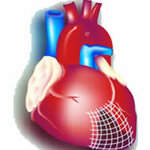Applied Physics

A new molecular "fishing" technique developed by researchers at Duke University and Duke's Pratt School of Engineering lays the groundwork for future advances in hand-held sensing devices.
Hand-held devices used for medical testing or environmental and food-safety monitoring could quickly and precisely measure concentrations of virtually any chemical substance, including blood proteins, toxic pollutants and dangerous biological agents, in a test solution, according to the researchers.
The researchers describe the chemical methodology that would enable such devices in this week's online…

Crumpled kitchen foil that lays flat for reuse. Bent bumpers that straighten overnight. Dents in car doors that disappear when heated with a hairdryer. These and other physical feats may become possible with a technique to make memory metals discovered by researchers at the University of Illinois.
Normally, when a piece of metal – such as a paperclip – is bent, the change in shape becomes permanent. But, when heat is added to bent metal films having the right microstructure, the researchers found, the films return to their original shapes. The higher the temperature, the sooner the metal…

Scientists at MIT have created an ocean model so realistic that the virtual forests of diverse microscopic plants they "sowed" have grown in population patterns that precisely mimic their real-world counterparts.
This model of the ocean is the first to reflect the vast diversity of the invisible forests living in our oceans-tiny, single-celled green plants that dominate the ocean and produce half the oxygen we breathe on Earth. And it does so in a way that is consistent with the way real-world ecosystems evolve according to the principles of natural selection.
Scientists use models such as…

Picture the flow of water over a rock. At very low speeds, the water looks like a smooth sheet skimming the rock's surface. As the water rushes faster, the flow turns into turbulent, roiling whitewater that can overturn your raft.
Turbulence is important in virtually all phenomena involving fluid flow, such as air and gas mixing in an engine, ocean waves breaking on a cliff and air whipping across the surface of a vehicle. However, a comprehensive description of turbulent fluid motion remains one of physics' major unsolved problems.
MIT visualization of the chaotic tangle underlying…

Scientists at the University of Illinois have fabricated the world’s smallest chain-mail fabric. Combined with existing processing techniques, the flexible, metallic fabric holds promise for fully engineered smart textiles.
"The miniature fabric is an important step toward creating textiles where structure and electronics can be designed, integrated and controlled from the ground up," said Chang Liu, a Willett Scholar and a professor of electrical and computer engineering at Illinois.
Micrograph of released metallic fabric that is expanded to the maximum area. Photo courtesy Chang Liu
The…

Common bacteria with an overt reaction to toxins that cause oxidative stress show promise as a biosensor to predict public health threats.
At the 233rd American Chemical Society national meeting in Chicago March 25-29, researchers from Virginia Tech and the Edward Via Virginia College of Osteopathic Medicine (VCOM) reported their work on a bacteria biosensor prototype and correlations to brain tissue damage.
Many environmental toxins in water, such as pesticides, heavy metals, and PCBs, kill through oxidative stress mechanisms, said Bev Rzigalinski, a pharmacologist with VCOM. Oxidative…

Virginia Tech chemists are looking for biobased alternatives and environmentally friendly reaction pathways to replace a toxic intermediate that is a critical component of many polymer products.
Isocyanates are important to many products we take for granted – from paint to spandex running shorts. But the high reactivity for which the chemical group is valued also makes this compound toxic when breathed.
Sharlene R. Williams of Springfield, Ohio, a graduate student in chemistry at Virginia Tech, has created macromolecules with comparable reactivity using soy-based chemistry. She will present…

Some day, heart attack survivors might have a patch of laboratory-grown muscle placed in their heart, to replace areas that died during their attack. Children born with defective heart valves might get new ones that can grow in place, rather than being replaced every few years. And people with clogged or weak blood vessels might get a new “natural” replacement, instead of a factory-made one.
These possibilities are all within reach, and could transform the way heart care is delivered, say University of Michigan Medical School researchers in the new issue of the journal Regenerative Medicine…

Gene therapy - the idea of using genetic instructions rather than drugs to treat disease - has tickled scientists' imaginations for decades, but is not yet a viable therapeutic method. One sizeable hurdle is getting the right genes into the right place at the right time.
Engineers at the University of Wisconsin-Madison are now developing a tool to tackle this problem.
David M. Lynn and his colleagues have created ultrathin, nanoscale films composed of DNA and water-soluble polymers that allow controlled release of DNA from surfaces. When used to coat implantable medical devices, the films…

Despite the attractive electrical properties and physical features of single-walled carbon nanotubes, incorporating them into scalable integrated circuits has proven to be a challenge because of difficulties in manipulating and positioning these molecular scale objects and in achieving sufficient current outputs.
Now, researchers at the University of Illinois, Lehigh University and Purdue University have developed an approach that uses dense arrays of aligned and linear nanotubes as a thin-film semiconductor material suitable for integration into electronic devices.
The nanotube arrays can…